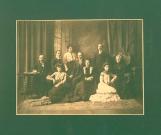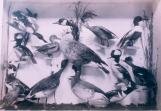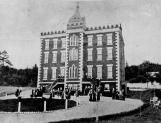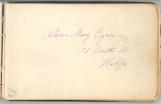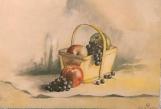3
''Advertisement for Thos. J. Egan, Sporting Guide to Nova Scotia catalogue''1909
Halifax, Nova Scotia, Canada

4
Family backgroundAlice Mary Egan was born 28 May 1872 to Lieutenant-Colonel Thomas J. Egan and Margaret T. (Kelly) Egan, prominent members of the large Halifax Catholic community. She had two sisters, Minie and Jean, and one brother, James. Her father Thomas J. Egan owned a gun and sporting goods shop in downtown Halifax, manufacturing and importing rifles and handguns and selling sport fishing equipment. By the early 20th century the business also provided taxidermy services for sport-hunters. Thomas J. Egan was a founding member of the Halifax Rifles, a militia unit, and wrote "History of the Halifax Volunteer Battalion and Volunteer Companies 1859-1887". He was a noted marksman, serving as a member of 63rd Battalion's Mappin Team in Wimbledon, England in 1889. He was a well known sport fisherman and an active member of the Halifax Charitable Irish Society and the Dartmouth Trap and Skeet Club.
7
Mount Saint Vincent AcademyIn 1882, 10-year-old Alice Egan was sent to board at Mount Saint Vincent Academy, a school run by the Sisters of Charity on the shores of Bedford Basin just a few kilometres from Halifax, in preparation for her first Holy Communion. In 1965 she reflected on her experience at the Mount. She retained vivid memories of Sister Fidelis who taught her catechism and 'planted the good seed'. Sister Fidelis also encouraged Alice Egan's interest in visual art, and it was at her suggestion that Alice produced her first creative effort with paint and brush, a Christmas card for her mother. From this first effort she moved on to scenes of the Mount grounds and other local landscapes. While at the Mount Alice Egan also studied academic subjects, supplemented by piano lessons and physical culture. Her warmest memories of her time at the Academy focus on the Sisters who taught her and the friendships she made with girls from across the region. Visits to the city required a walk along the railway tracks, past Fairview and Africville, to the northend terminus of the Halifax Street Railway at Richmond.(1)
(1) "Mount Memories of Alice Egan," Folia Montana, Spring 1965.
8
Alice Hagen ''Untitled Botanical Drawing'' (no date) oil pastel on laid paper1900
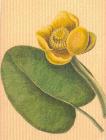 Credits:
Credits:Private collection
11
Alice Egan, young artistMargaret Kelly Egan, Alice's mother, was an accomplished amateur artist and she and Alice often worked collaboratively as china painters. Her mother was obliged to spend a good part of her time in bed and so she gave Alice some drawing materials to keep her busy. Alice took part in the usual activities of a growing child but she also had a special interest in painting and nature. Often she went cycling alone in the country with a supply of sketching materials in search of a floral subject. She was very much inspired by the engravings she saw in The Aldine Journal of Art, which was published in New York. Alice's parents, especially her father, were reluctant to encourage her aspirations to become a professional artist, because it was not regarded as suitable work for a woman, but Alice persisted. (1)
(1) A Dictionary of Canadian Artists, 1997 ed., s.v. "Hagen, Alice Mary."
13
Victoria School of Art and DesignIn 1893 Alice Egan began to attend the Victoria School of Art and Design in Halifax. Her father was not enthusiastic about a career as an artist for his daughter, encouraging her instead to become a milliner. Although the millinery business was notorious for its low wages, her father apparently believed it offered more financial security than art. Alice, however, was determined to pursue training as an artist and paid for her tuition by the sale of watercolours. Her course of study at the Victoria College of Art was interrupted by her growing business as a china painter, however, and she did not complete her program and receive her diploma until 1899. In the 1899-1900 term Alice Egan taught china painting at the college.
